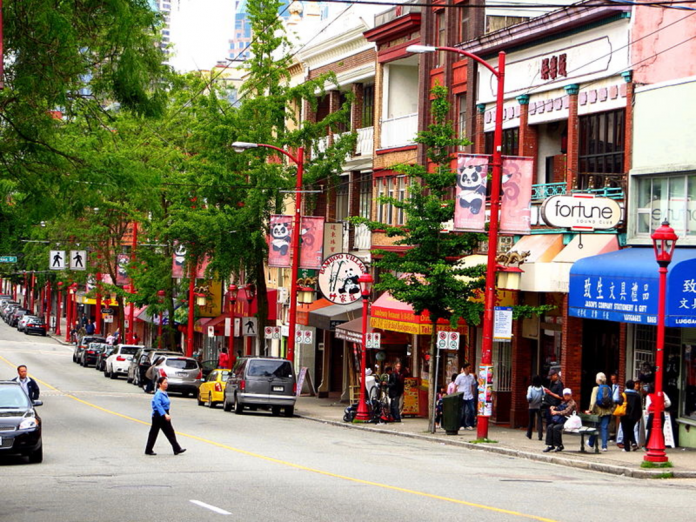Chinatown in Vancouver, which is already a National Historic Site, is being considered for a UNESCO World Heritage Site designation. This comes with the realization that Vancouver’s Chinatown is in dire straits, and is at risk of losing its identity. The main symptom of this decline is the loss of local businesses selling fresh foods, about half of which have shut down since 2009, according to a CBC piece on the subject. Conversely, Chinatown is undergoing gentrification, with hip boutiques and coffeeshops intruding on the neighbourhood, eroding its distinct character. The question being debated is not so much whether or not Chinatown should be preserved, but how.
Chinatown now stands at a crossroads, both literally and figuratively, between two extremes. On one side, you have Gastown. Gastown certainly doesn’t lack in historic buildings and streets, and it has a rich sense of character, but over the years it has been gentrified to hell and back. The place is beautiful, and I enjoy being there, but I get the nagging feeling that this place is not meant for people like me, who are neither tourists nor obscenely rich.
Gastown simply has no place for those of us who aren’t in “the club,” so to speak. A few blocks to the east, and you come to the notorious Downtown Eastside, which can be pretty scary at times with its run-down buildings, and equally run-down homeless population. Still, as a (mostly) life-long Vancouverite, I can’t help but take a perverse sort of pride in the Downtown Eastside and places like it, because it represents a more honest and accepting face of the city, a place that hasn’t yet been sanitized, gussied up, and purged of “riff-raff,” like so many other parts of the city.
Yet at the same time, one cannot ignore that it is a nest of poverty, drug abuse, and urban decay. The Downtown Eastside merely shows the problems of a troubled city from a different perspective. Chinatown is somewhere in between. It still has that grit, and that distinctive and inclusive identity that I know and love. At the same time, it still has aesthetic appeal, and is something a resident of the city can take deserved pride in. I would hate to see Chinatown fall to either extreme, becoming either an alley strewn with used needles, or Trump Tower.
Dr. Ho Yin Lee of the University of Hong Kong, interviewed by the CBC, made some very astute points. The two main takeaways were that one should strive to “keep a living community living,” and keep the right cultural perspective in mind.
Preserving monuments is the easy part. It wouldn’t require too much effort and expense to keep the key structures, like the main gate, the Dr. Sun Yat-Sen Classical Chinese Gardens, or the red lamp posts with the golden dragons, in good repair. But you can no more bring back a community once it has been extinguished than you can bring back the people who once thronged the streets of Pompeii or Teotihuacan. It is these people, dead or alive, who truly stir the imagination, and make a community what it is. Preserving this aspect by involving the younger generations, and ensuring that the old-timers aren’t driven out by skyrocketing real estate prices, among other things, should be essential. Investment cooperatives, which are used in places like Minneapolis and New York, were cited in the CBC as possible ways to inject new life into Chinatown’s traditional businesses, and by extension, the people who rely on them.
Lee also stated that making Chinatown just a “Chinese thing” wouldn’t work, and that it is important to frame Chinatown’s preservation in a Canadian context. I am inclined to agree. Turning Chinatown back into a narrow enclave won’t make most people care. Instead, we should recognize the important role that Chinatown, and the Chinese community, has played in the past and present of Vancouver. Without their contributions, represented by Chinatown, Vancouver wouldn’t be the same as it is today, any more than Boston would be without the Irish, or New York without the Italians and Jews, and so on.
In the big scheme of things, the question of Chinatown is the question of whether we are able and willing to preserve that which we know and love about the places where we live, not only within Vancouver, but everywhere. It illustrates the challenge of making our communities safe and appealing, while at the same time allowing as many people as possible to have a place in that community. A straight diet of artisanal avocado toast will make you sick just as surely as eating nothing but cheap instant ramen will, because that’s all you could afford after paying rent. Personally, I would prefer the rich stir fry that I believe Vancouver still represents, and I hope will continue to represent in the years to come.
Image: “Xicotencatl”/Wikimedia


